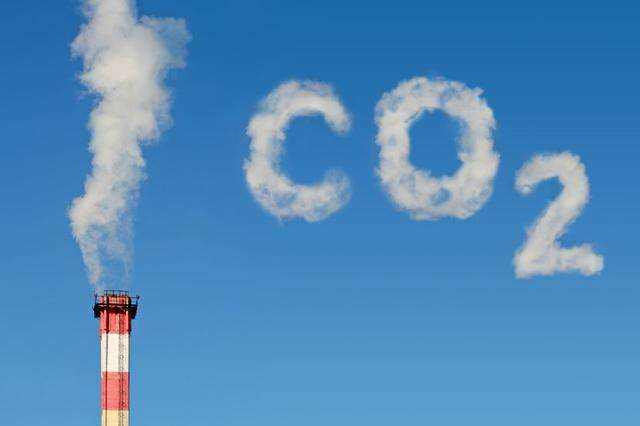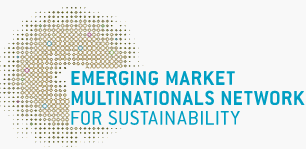Strive to realize energy and low carbon economic transition
2019-09-30GoldenBeeHe Jiankun0

He Jiankun, Former Executive Vice-President of Tsinghua University
Director of Low Carbon Economy Lab of Tsinghua University
At present, the sustainable development worldwide is advancing two major processes simultaneously. One is to promote the 2030 Agenda for Sustainable Development, which aims to achieve the coordination and balance among global economic development, social progress and environmental protection. The other is the implementation of the Paris Agreement, which aims to promote the energy transition and low-carbon economy transformation so as to control global temperature rise and protect the ecological security of the earth.
Policies and measures to achieve these two goals are consistent and have a wide range of synergies. Both need to strengthen the energy revolution and establish a clean, low-carbon, safe and efficient energy system. It also is needed to promote the transformation of the economic development mode, develop a sustainable economic system that is green, low-carbon and recyclable, and create an all-win situation and cooperative governance of economic development, energy security, environmental protection and carbon dioxide reduction.
Since Chinese economy has entered a new normal, we adhere to the new development concepts, and the economic development is changing from a high-speed growth mode featuring scale and speed to a high-quality development mode featuring quality and efficiency. It has accelerated the pace of energy conservation and carbon dioxide reduction, reversing the rapid growth of energy consumption and carbon dioxide emissions before the new normal economy.
Policies and measures to achieve these two goals are consistent and have a wide range of synergies. Both need to strengthen the energy revolution and establish a clean, low-carbon, safe and efficient energy system. It also is needed to promote the transformation of the economic development mode, develop a sustainable economic system that is green, low-carbon and recyclable, and create an all-win situation and cooperative governance of economic development, energy security, environmental protection and carbon dioxide reduction.
Since Chinese economy has entered a new normal, we adhere to the new development concepts, and the economic development is changing from a high-speed growth mode featuring scale and speed to a high-quality development mode featuring quality and efficiency. It has accelerated the pace of energy conservation and carbon dioxide reduction, reversing the rapid growth of energy consumption and carbon dioxide emissions before the new normal economy.

From 2005 to 2013, China’s GDP growth averaged 10.2% annually, energy consumption elasticity was 0.59, and annual growth rates of energy consumption and carbon dioxide emissions was 6.0% and 5.4%, respectively. From 2013 to 2018, the average annual growth rate of China’s GDP fell back to 6.9%, and the energy consumption elasticity also dropped to 0.32. With the improvement of energy structure, the corresponding annual growth rates of energy consumption and carbon dioxide emissions fell to 2.2% and 0.8%, respectively.
However, it is noteworthy that the growth rates of energy consumption and carbon dioxide emissions rebounded in 2017 and 2018. This is mainly due to the expansion of energy-intensive heavy chemical industry capacity and infrastructure construction in some places to cope with the downward pressure of the economy. However, in the next few years, the rapid growth of energy consumption and carbon dioxide emissions before the new normal economic situation will not recur, and the trend of rebound will be effectively curbed.
At present and during the 14th Five-Year Plan period, we should maintain our strategic determination, adhere to the goal of energy conservation and carbon reduction and do not relax the policy measures. Under the guidance of Xi Jinping's thought on ecological civilization, we should strive to achieve high-quality development oriented by ecological priority and green low-carbon development.
However, it is noteworthy that the growth rates of energy consumption and carbon dioxide emissions rebounded in 2017 and 2018. This is mainly due to the expansion of energy-intensive heavy chemical industry capacity and infrastructure construction in some places to cope with the downward pressure of the economy. However, in the next few years, the rapid growth of energy consumption and carbon dioxide emissions before the new normal economic situation will not recur, and the trend of rebound will be effectively curbed.
At present and during the 14th Five-Year Plan period, we should maintain our strategic determination, adhere to the goal of energy conservation and carbon reduction and do not relax the policy measures. Under the guidance of Xi Jinping's thought on ecological civilization, we should strive to achieve high-quality development oriented by ecological priority and green low-carbon development.

We need to further establish and strengthen the indicator of energy intensity and carbon dioxide intensity reduction per unit GDP, as well as the "two-control" mechanism for controlling total energy consumption and total carbon dioxide emissions. We should strengthen the reform of the management system for energy conservation and carbon reduction and the fiscal and financial policy system, and develop and improve the national unified carbon emission trading market. During the 14th Five-Year Plan period, we need to promote the early realization of carbon dioxide emission peak in the industrial sector, especially in the energy-intensive heavy chemical industry. We should encourage more developed provinces and municipalities along the eastern coast to take the lead in peaking carbon dioxide emissions, so as to promote low-carbon energy and economic transformation and high-quality development.
Under the Paris Agreement, China put forward the commitment target of reducing emissions independently by 2030, which coincides with the goal of realizing the fundamental improvement of ecological environment in the first stage of modernization construction by 2035. The goals and paths are coordinated, and there is a great consistency in policy and measures. Correspondingly, the strategies of energy revolution and economic transformation should ensure that the two goals can both reach the standard, and effectively guarantee the demand for sustainable energy growth for the basic realization of modern economic and social development.
At this stage, it is necessary to promote the realization of peaking carbon emissions as early as 2030 by increasing energy conservation and improving energy efficiency, so that the annual decline rate of energy intensity per unit of GDP will continue to maintain around 3.0% to 3.5%. With the grid parity of wind power and solar energy, the development of new energy and renewable energy should be further accelerated, and the goal that non-fossil energy generation accounts for 50% of total electricity by 2030, which was proposed in the Energy Production and Consumption Revolution Strategy (2016~2030) should be achieved. By then, the proportion of non-fossil energy in primary energy consumption will increase to more than 20%, and the carbon dioxide intensity per unit of GDP will fall by more than 65% compared with that of 2005.
By 2030, efforts should be made to stabilize the annual rate of decline in carbon dioxide intensity of GDP to more than 5%, in order to support to peak carbon dioxide emissions in the premise of GDP growth rate at around 5%. This will fully facilitate to ensure China's independent contribution to emission reduction commitments and play a leading role in the global development of a climate-friendly low-carbon economy.
China's long-term energy strategy 2050 should not only support the realization of the goal of building a strong socialist modernized country and beautiful China, but also adapt to and lead the urgent emission reduction process under the global target of 2 degrees Celsius. The long-term energy strategy after 2035 should aim at achieving near-zero deep decarbonization in the mid-21st century, and develop a technical roadmap and implementation approach for near-zero carbon emission or net zero carbon emissions energy system with new energy and renewable energy as the main body, which will make contributions to the ecological security of the earth and the common interests of mankind commensurate with China's comprehensive national strength and international influence in the future. By then, China will also build competitive advantages in advanced energy and low carbon technologies and industries worldwide.

The report of the 19th CPC National Congress pointed out that China "guides international cooperation on climate change and becomes an important participant, contributor and torchbearer in the global endeavor for ecological civilization." Xi Jinping's thought on ecological civilization has universal guiding significance for the global realization of energy and low-carbon economic transformation, addressing climate change and building global ecological civilization.
International cooperation in advanced energy technologies and industries not only promotes win-win cooperation and common development among countries, but also promotes the joint efforts on addressing the global ecological crisis. It has more intersection points of common interests and cooperation space, and may become a pioneer field and a successful example of building a community of shared future for mankind. Guided by Xi Jinping's thought on ecological civilization and the concept of a community of shared future for mankind, China should contribute its wisdom and experience to global ecological security and sustainable development of human society.
(Translated by GoldenBee, the Chinese version of this article is issued on China Sustainability Tribune wechat account)
(Images in this article are from the Internet)
International cooperation in advanced energy technologies and industries not only promotes win-win cooperation and common development among countries, but also promotes the joint efforts on addressing the global ecological crisis. It has more intersection points of common interests and cooperation space, and may become a pioneer field and a successful example of building a community of shared future for mankind. Guided by Xi Jinping's thought on ecological civilization and the concept of a community of shared future for mankind, China should contribute its wisdom and experience to global ecological security and sustainable development of human society.
(Translated by GoldenBee, the Chinese version of this article is issued on China Sustainability Tribune wechat account)
(Images in this article are from the Internet)
Best Practices
- The 100-year brand — Air Liquide also has a sense of juvenile
- Beijing Public Transportation Corporation: Developing green transportation to build a harmonious and livable capital
- CGN: Building a modern factory in barren deserts and developing a new win-win cooperation model along “Belt and Road”
Upcoming Event

All the materials on the site “Source: XXX (not from this site)” have been reprinted from other media. They do not imply the agreement by the site.
All the materials with “Source: CSR-China Website” are the copyright of CSR-China Website. None of them may be used in any form or by any means without permission from CSR-China Website.
GoldenBee Official WeChat
Copyright © Csr-china.net All Right Reserved.
京ICP备19010813号










